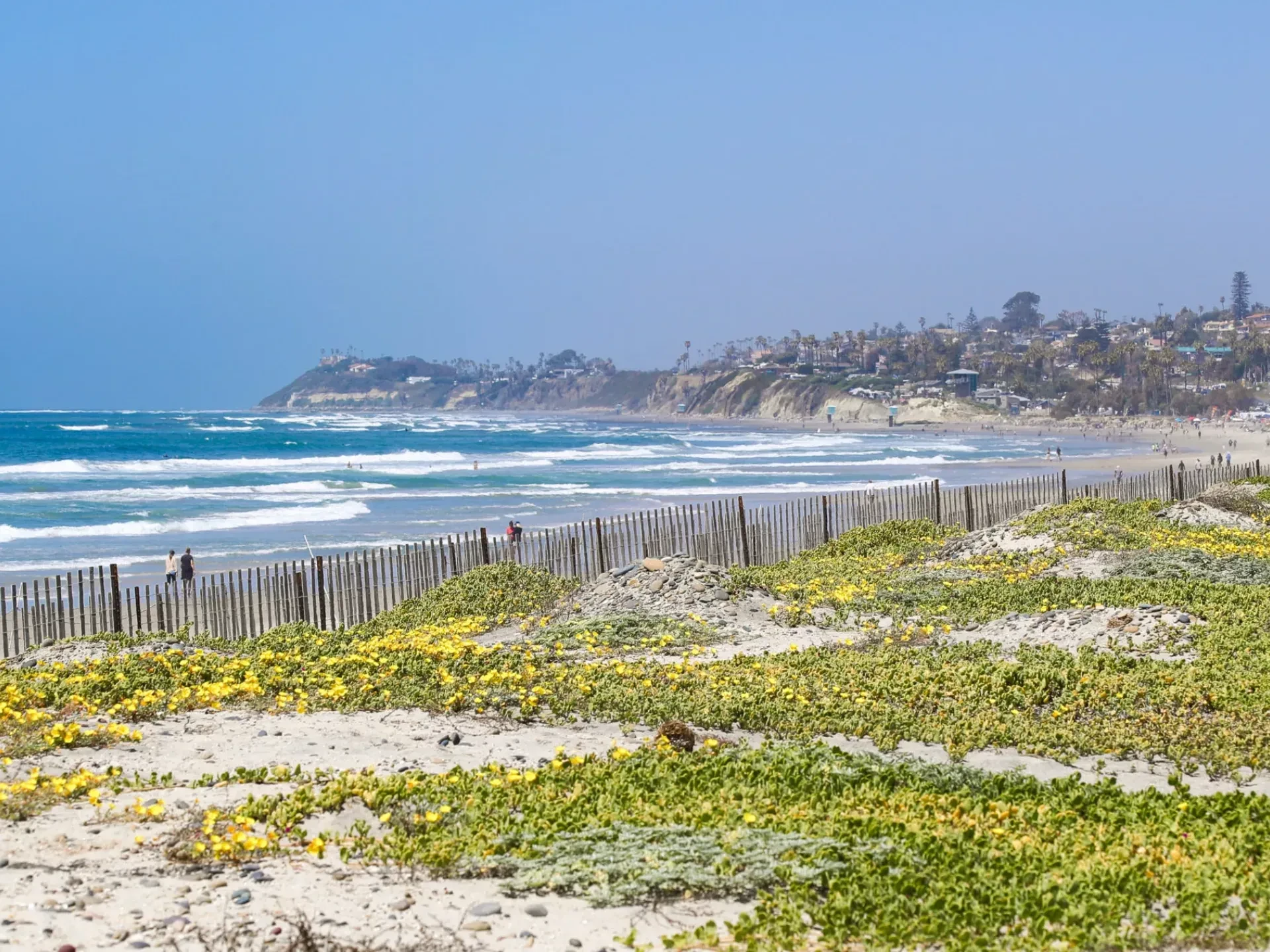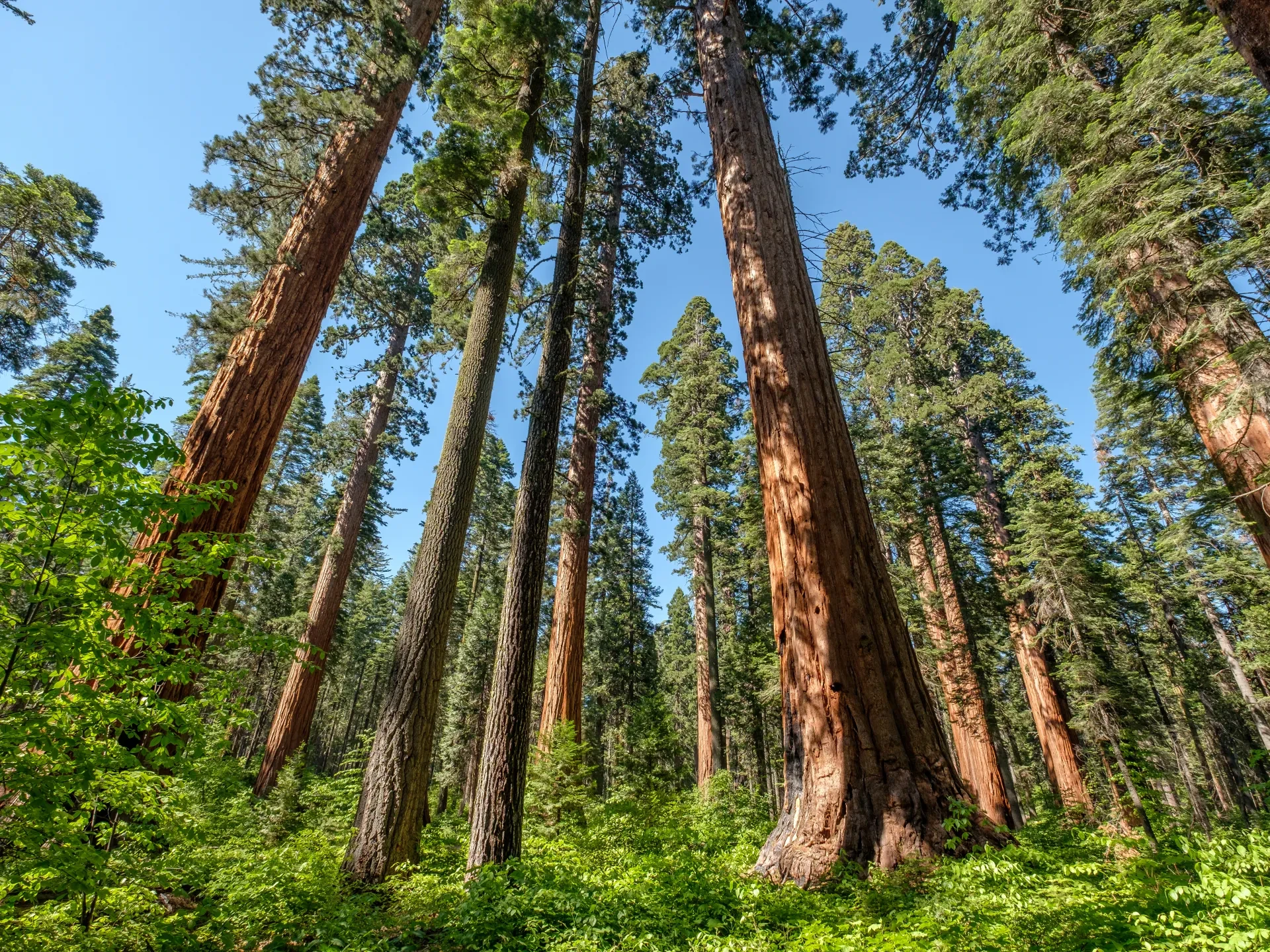What is a nature-based solution?
California state parks are an essential part of California’s identity, shaped by dramatic landscapes, remarkable wildlife, and exciting outdoor adventures. However, these cherished spaces are now increasingly threatened by climate change. Ancient sequoia groves are burning in more frequent and severe wildfires, coastal parks are being eroded by rising sea levels and intensifying storms, and endangered species that call state parks home are losing vital habitat. To face this crisis, California State Parks are turning to nature-based solutions that can prepare parks for climate change.
Unlike building seawalls or using the latest technology, nature-based solutions use natural materials and ecosystems to mitigate the effects of climate change. They can include restoring wetlands that buffer sea level rise and maintaining healthy forests to decrease wildfire risk and preserve wildlife habitat. Nature-based solutions can also protect visitor facilities and improve public access. Therefore, they are an extremely valuable tool for California State Parks, and California State Parks Foundation has been supporting their implementation at parks across the state.
Nature-based solutions at the coast
Living shorelines
California state parks make up almost one quarter of California’s shoreline, and the effects of sea level rise are already being felt at many coastal parks. However, man-made structures to mitigate sea level rise, such as seawalls and rock barriers, damage the surrounding environment. Instead, California State Parks and park partners are using living shorelines, a nature-based solution that stabilizes the shoreline using native plants, sand, and other natural materials.
Living shorelines can reduce coastal flooding and shoreline erosion caused by climate change and create habitat for California’s diverse coastal wildlife. For example, California State Parks built a living shoreline at Cardiff State Beach made of sand dunes and native plants, which reduced or prevented flooding during the unprecedented winter storms in January, while also preserving critical habitat for the Western snowy plover, a threatened sea bird that nests in over 60 coastal parks. Living shorelines are now being built at parks up and down the coast and are a critical step to making California state parks more climate-resilient.
Living shorelines also highlight that nature-based solutions can prepare state parks for climate change while increasing park access and making surrounding communities more climate-resilient. For example, California State Parks Foundation has restored seven acres of wetlands to create a living shoreline at Yosemite Slough in Candlestick Point State Recreation Area. This work will not only mitigate the effects of sea level rise, but it also increases access to coastal greenspace for the surrounding under-resourced community, whose residents are less likely to have air conditioning. Access to cooler coastal areas is critical for public health as temperatures continue to rise because of climate change, showing that nature-based solutions can not only build climate resilient parks, but resilient communities as well.
Nature-based solutions in our forests
Carbon removal and storage
Restoring forest health is another nature-based solution that is critical to increasing climate resilience in many California state parks. Climate change and over 150 years of fire suppression have created dense, overgrown forests that are choked with dry, highly flammable fuel that can drive a catastrophic wildfire. Unhealthy forests are also less supportive of diverse wildlife and are less productive, meaning they remove less carbon dioxide from the atmosphere than healthy forests. This carbon removal and storage (called sequestration) is important for reducing greenhouse gases in the atmosphere. Therefore, restoring and maintaining healthy forests is a nature-based solution that reduces wildfire risk, promotes biodiversity, and helps offset the greenhouse gas emissions that are driving climate change.
Prescribed burns
Because forest health is so critical, California State Parks has been ramping up their Wildfire and Forest Resilience Program to help increase climate resilience for thousands of acres in state parks. This work includes conducting prescribed burns to clear out excess fuel, improve ecosystem health, and support native species. For example, the iconic giant sequoias in Calaveras Redwoods State Park need fire to propagate because heat causes cones to open and release seeds. Reforestation after a fire is also key to increasing carbon sequestration as new trees begin to grow. Major reforestation efforts are underway at Cuyamaca Ranch State Park, 98% of which burned in the 2003 Cedar Fire. Forest restoration is a complex nature-based solution that requires significant resources, time, and partnerships to be conducted at a large scale. However, forest health is so critical to increasing climate resilience, that it is at the center of California State Parks’ climate resilience work.
How can you support climate resilient state parks?
Living shorelines, fuels reduction, reforestation, and other nature-based solutions are being used in state parks across California. California State Parks Foundation is supporting this work through on-the-ground projects, climate resilience grants for park partners, and by advocating for state parks in Sacramento.
You can get involved and help build a climate resilient California state park system! Join us for one of our volunteer events or consider donating to help us build a climate-resilient state park system.

